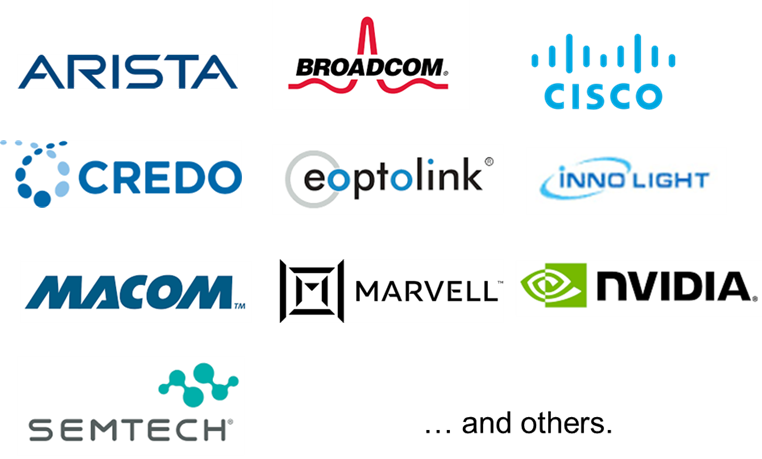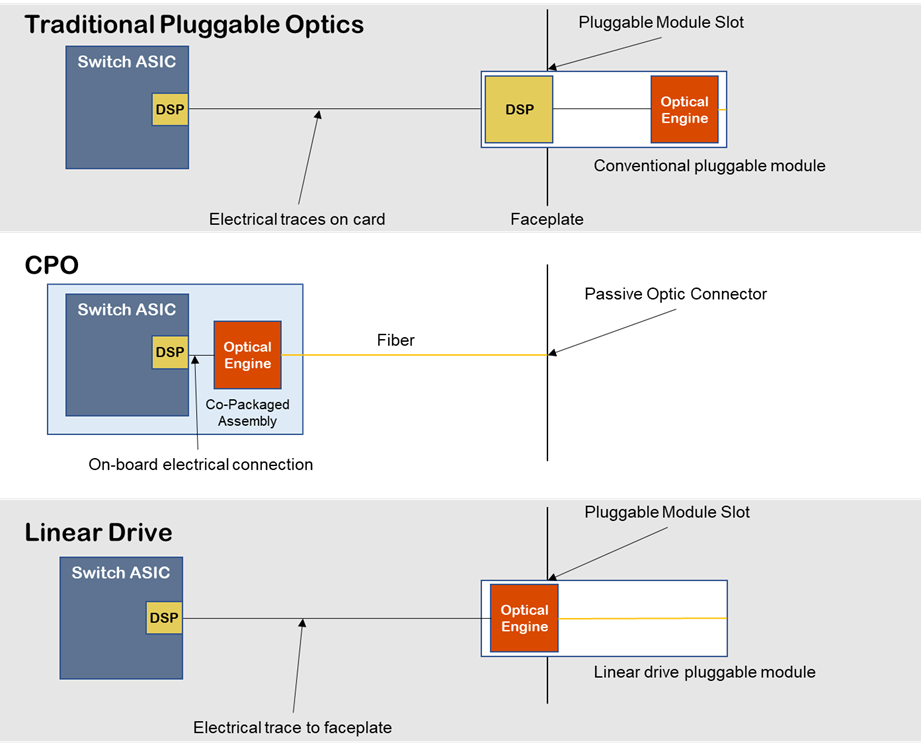In this report, Cignal AI follows up on our initial, post-OFC analysis of Linear Drive (see Linear Drive in the OFC23 Show Report) with an in-depth analysis of the technology. Following presentations at OFC in March by Andy Bechtolsheim of Arista, Linear Drive optics became a popular discussion point in the industry. For this report, we talked with equipment and component suppliers who are developing products or supplying customers with an interest in Linear Drive.
Objective: Provide a clearer understanding of the benefits and challenges of bringing Linear Drive to market and provide a preliminary assessment of its potential impact on the industry.
Key Takeaways: Linear Drive has benefits, some of which have been shown in early demos, but it also has some significant technical and business challenges that will limit it from widespread deployment.
- Linear Drive offers compelling power savings but there are competing solutions being developed in parallel that will dull its impact.
- Issues around switch chip support, system design, interoperability, and timing will limit the overall size of the Linear Drive market opportunity.
- Given the amount of investment being funneled into Linear Drive, there will be some modules deployed in niche cases within homogenous hyperscale datacenters.
- Cignal AI forecasts that less than 10% of our 800GbE datacenter optics forecast will use Linear Drive. This equates to fewer than 100k units in 2027.
Report Outline:
- What is Linear Drive: Defining the technology
- Overview of the Linear Drive Market Opportunity: Why operators are interested in the technology and a summary of arguments in favor of and against Linear Drive’s market opportunity.
- Detailed Analysis: A deeper look into opportunities and challenges facing Linear Drive, including:
- Power savings: What will be the real power savings, and how will competing solutions affect market adoption?
- Switch chip support: Linear Drive relies on the switch chips to work. How committed are switch chip vendors to supporting the technology?
- System design: The supporting routers and other hardware have strict design guidelines to support Linear Drive for all cases. Will vendors make those changes?
- Interoperability and standards: The OIF is working on a standard to facilitate interoperability. Will it work and will vendors comply?
- Customers and applications: Which operators can use Linear Drive and how committed are they to the technology?
- Timing: How big is the market window for Linear Drive and will it be too late to gain significant market share?
- Conclusions: The results of Cignal AI’s analysis of the technology, its prospects, and its impact on specific vendors and operators.
Thank you to the following companies who contributed information and opinions to this report as well as many other individuals who spoke with us about the technology, its applications, and its commercial potential.

What is Linear Drive?
Datacenter power consumption is rising, and more of that power is being dedicated to the optical interconnections between systems inside the datacenter as the speed of those links increases. Linear Drive is one of several approaches that are being taken to reduce overall datacenter power consumption. Linear Drive reduces the power required by pluggable optics in routers and other equipment by eliminating the digital signal processor (DSP) and instead relying on the SERDES DSP (or PHY) in the switch chip for signal formatting.
In traditional pluggable optics-based systems, the DSP/PHY on the switch ASIC drives a signal over an electrical trace on a circuit board to a pluggable optic. On that pluggable optic, another DSP cleans up the received signal and re-generates it before sending it to the optical engine for transmission. Having a separate DSP on the pluggable optic isolates the electrical, on-board signal performance issues from the optical channel, making simple plug-and-play operation possible for network operators. The DSP on the optics can be tuned to optimize the optical link without having to consider electrical issues inside the system. With very few exceptions, all pluggable optics deployed today use an integrated DSP.
With Linear Drive (also called Direct Drive or Linear Pluggable Optics), the DSP on the pluggable optics is eliminated. The DSP/PHY on the switch ASIC is used to directly drive an optical engine located on a pluggable that does not include retimers or DSPs, only linear amplifiers. By eliminating functionality, the power consumption for a Linear Drive system is not quite as small as for Co-Packaged Optics (CPO – optical engines co-located with the switch ASIC) but is much lower than traditional pluggable architecture and retains the benefits of pluggability.

Overview of the Linear Drive Market Opportunity
Clients log in to access full report
